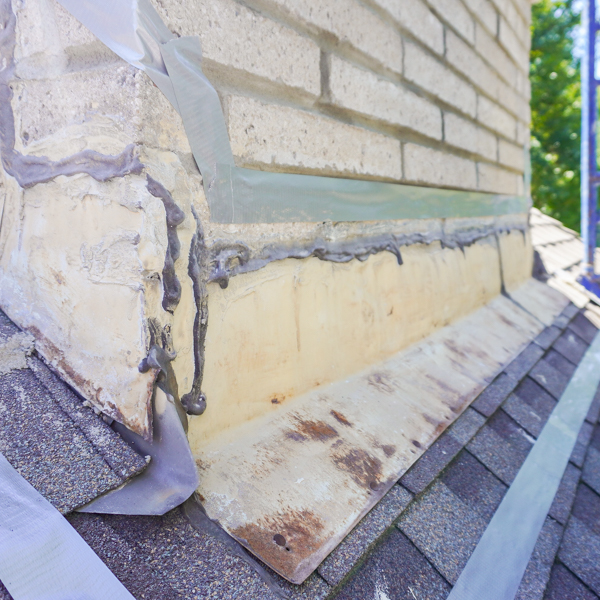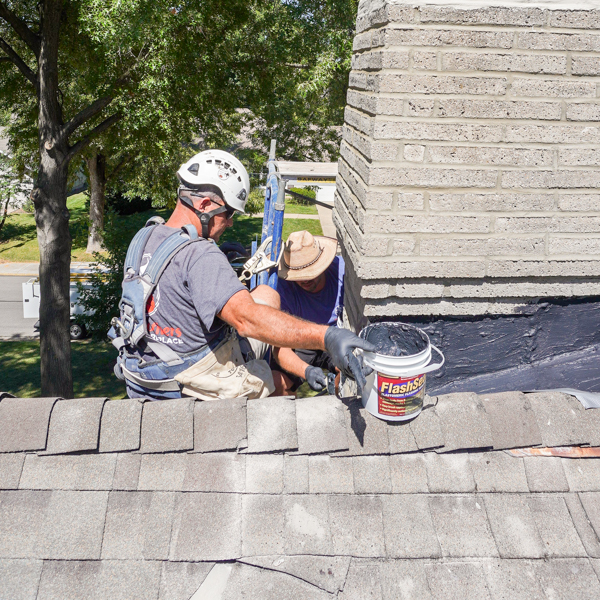Does Snow Cause Damage to Chimneys?
This year the Kansas City Metro area is experiencing a wild winter season as we are being inundated with severe thunderstorms that are having a significant impact across the Midwest. Our area typically averages just 14.5 inches of snowfall annually, 50 percent less than the U.S. national average. However, local meteorologists say that a lot of snow is on the way with many portions of Kansas City, KS/MO expecting 4 to 8 inches of snow this week. There is also a greater than 20 percent chance of more than a foot of snow forecasted for the region. Fortunately, snow doesn’t stick around too long and begins to melt as temperatures climb above freezing during the day. However, when temperatures drop below freezing at night, it turns into ice. The compound effect of freezing rain, snow, and ice can cause damage like a leaky chimney.
 Heavy Snow Can Damage Flashing
Heavy Snow Can Damage Flashing
While the light, fluffy snow may look relatively harmless, appearances can be deceiving. When snow compacts on your roof and chimney, it adds a lot of extra weight, about 15 to 20 pounds or more per cubic foot. The additional weight can damage the flashing, the metal sheets that seal the seam where the chimney meets the roof. In addition, water from melting snow can leak through gaps in the flashing. The moisture can cause wood rot and damage to the attic, roof deck, ceiling, and walls. If it’s not repaired, warmer humid temperatures will create conditions for mold and mildew to grow in the chimney that can spread throughout your home. The moisture also attracts pests like termites. One of the signs of potential flashing damage is noticing a water stain on the ceiling or walls surrounding the fireplace. Another sign is moisture in the attic. Quickly repairing flashing damage will protect your chimney and preserve your roof.
Snow and Ice Accelerates Masonry Damage
Have you noticed white stains, cracks, flaking, or gaps in your masonry or brick chimney? Those are all signs that your brick-and-mortar chimney is absorbing water. While brick and mortar are highly durable, they are still porous materials. That’s why water is the chimney’s worst enemy. You can tell that the masonry absorbs water when a white stain called efflorescence appears after the surface dries. The white stain is the salts in the brick material drawn to the surface by moisture. When the snow-covered chimney melts during the day, the masonry absorbs the moisture like a sponge. When it freezes at night, the ice crystals inside the bricks expand, causing them to crack. It also causes the mortar to decay. The freeze-thaw cycle repeats throughout the winter, gradually chipping away at the brick and mortar, causing them to eventually spall or crumble, loosen, and even fall off the chimney, exposing significant holes in the mortar joints. It can also cause cracks in the chimney crown, the upper-most portion of the chimney, especially when the chimney cap is damaged or missing. Extensive masonry damage can also cause your chimney to collapse, resulting in extensive property damage.
 Winter Chimney Repairs
Winter Chimney Repairs
If your chimney has signs of water, snow, or ice damage, call the certified chimney technicians at Fluesbrothers at (913) 236-7141 or contact us online to schedule an appointment today! We’ll inspect your chimney, perform masonry repairs, and waterproof your chimney to prevent future water damage. We serve Olathe, Independence, Lee’s Summit, and the entire KCK/KCMO metropolitan area.
The post Does Snow Cause Damage to Chimneys? appeared first on Fluesbrothers Chimney Service.